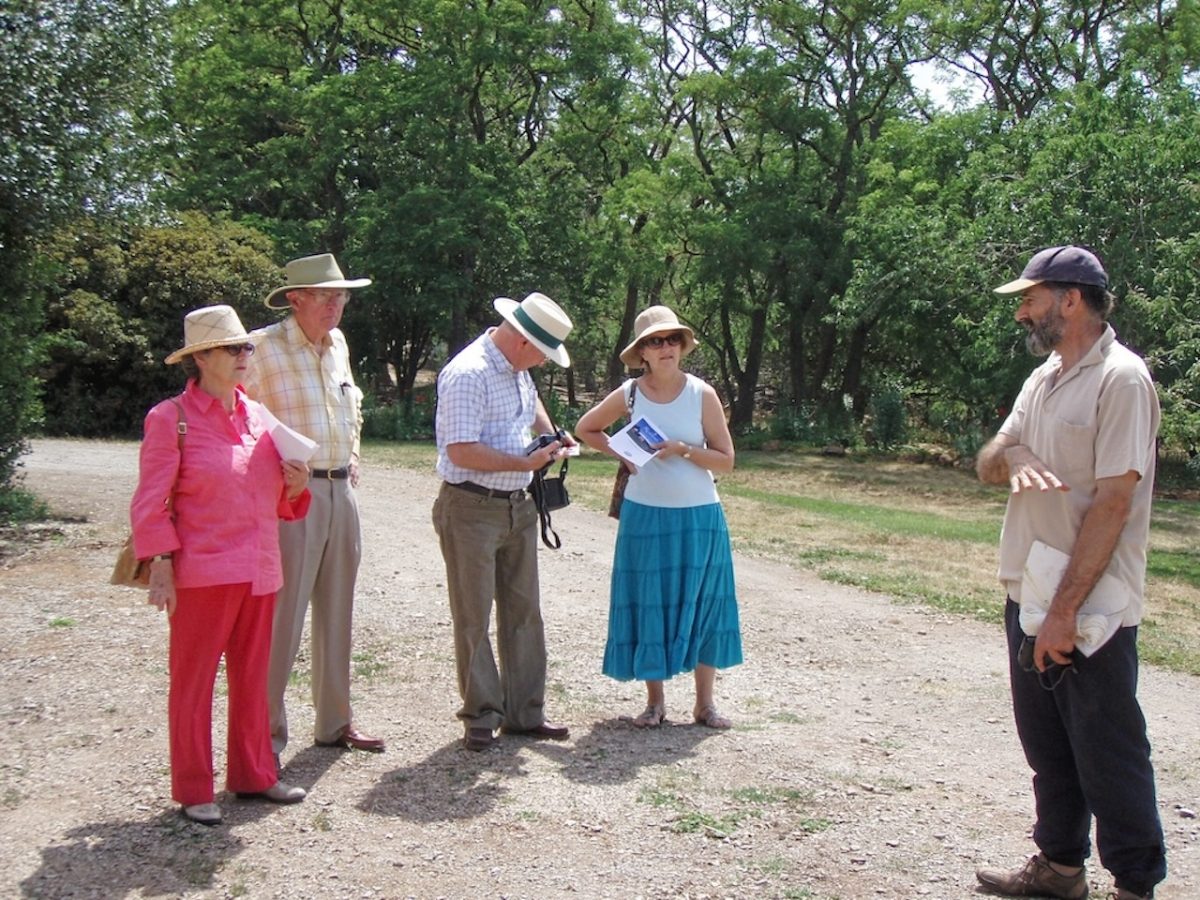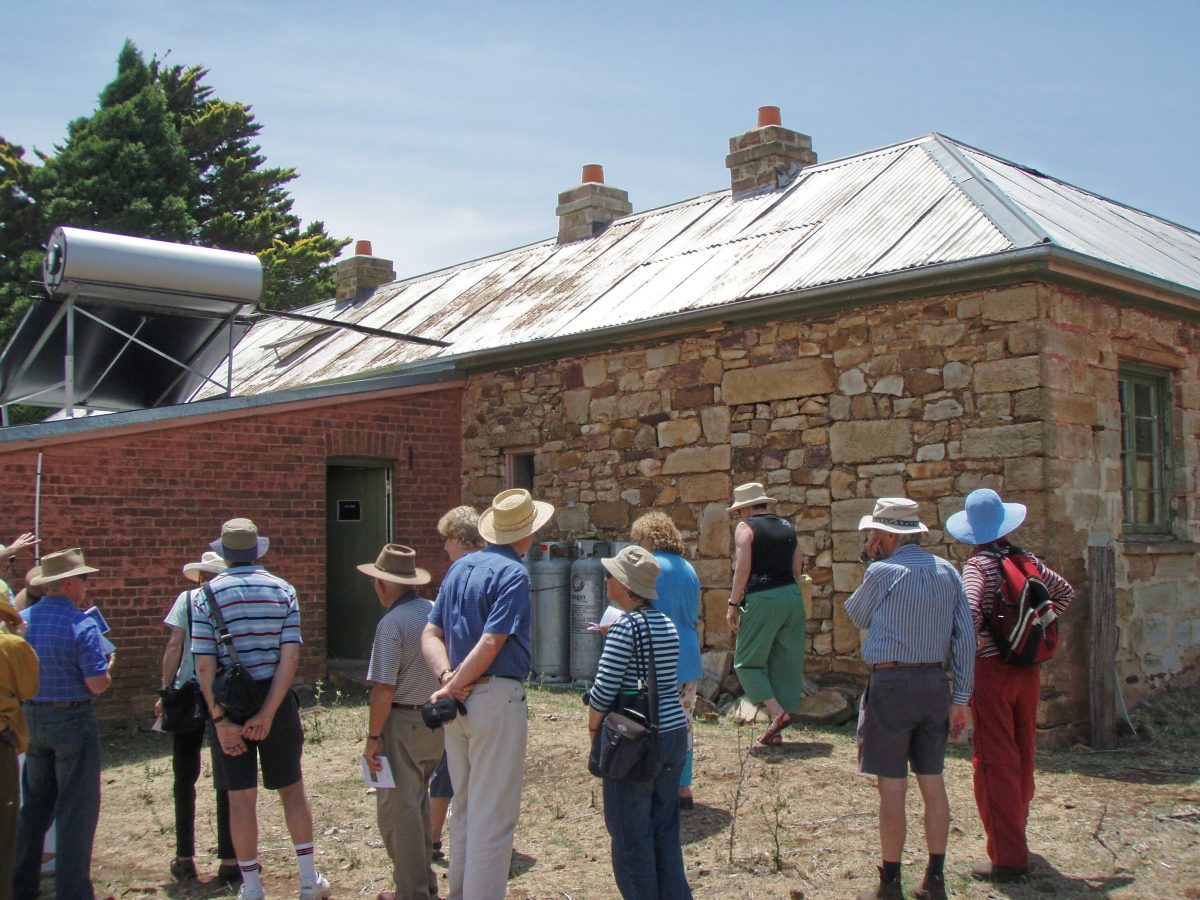
Richlands estate owner Stephen Horn speaking with people at an open day on the property, which will be opened again on Saturday, 5 October. Photos: Brendon Rutter.
A heritage adviser surprised Stephen Horn while he was researching the history of his family’s property, the Richlands estate, north of Goulburn near Taralga.
An outstation and key part of the Macarthur family pastoral empire for almost a century, Richlands, which will be opened to the public on Saturday, 5 October, was having a refresh of its history, homestead and buildings with the help of Heritage NSW. Stephen’s job was to write the history for a conservation management plan when he met the heritage adviser.
“He said he didn’t care about the house but he wanted to be absolutely sure that we didn’t mess up the silos,” Stephen said, recounting the project in 1996.
Two underground silos that figure in the history of agriculture in NSW were built at Richlands in the late 1830s, about the time the property had expanded to around 38,000 acres (15,378 hectares), including the village of Taralga.
About five metres deep, the two silos were cut into rock for storing grain, including wheat, which would have been a premium commodity.
“That was the highlight because it is so different to what happens now,” Stephen said.
The Macarthurs had engaged miners from England with the skills to build them.
The design can be found in about eight or nine locations in NSW. The ones in Sydney cut in sandstone had to be lined but Taralga district’s basalt rock was impervious, allowing sacks of grain to be stored for long periods. To prevent moisture entering from the surface opening, a narrow brick “neck” was added, and the hole thatched over.
“This is wonderful brickwork, but you are only aware of it if you go into the silo itself,” Stephen said. “Other people have actually opened up silos and you can get inside, but with ours, that (work) is still to be done.”
Stephen’s family has owned Richlands since the original estate was broken up in 1909-10. He and his wife Rosanna, who live in Canberra, have been opening the house to the public periodically since 1998.
At first, his aunt Joan Twynam (now deceased), who had lived there all her life, was aghast.

The late Ken Fleming, a former neighbour and friend of the Twynams of Richlands, and founding member of the Taralga Historical Society, explaining the milking shed underlay. It was later converted to a shearing shed.
“The fact all and sundry could come and walk through my aunt’s home was initially shocking for her but she came around to it because she found she could entertain in some gentility around the front,” Stephen said.
“She was not that interested in the history herself because the house hadn’t actually changed very much.
“But we convinced her. We thought it was appropriate if we were getting public money that we open the house up and explain how it fitted into the history of the district.”
The absentee landlords who ran Richlands were only a small part of a bigger story. Convicts, managers, tenant farmers, servants and the Burra Burra people, who were dispossessed and displaced from their Country, are the real story, according to Stephen.
He is collecting the histories of people who have traced their families’ links to Richlands and the district’s history.
“Realistically, the first people on the land from the European side were convicts, selected by the Macarthurs as the pick of the crop as the ships came in, so they had skilled people working the estate,” he said.
“And as the convict system petered out, the Macarthurs were quick on the ball setting up assisted migration, which filled the void as far as labour was concerned. They treated their convicts well; many stayed on as employees and later as tenants, so there was an orderly shift.
“The less-documented Aboriginal side is one we are exploring. We began with very little documentation on the convict side and it is only people actually tracing their ancestors that we have had some stories as to that early life.
“Taralga has benefited from this too; the families in Taralga date back to these times.”

People viewing Richlands homestead, which comprises a Georgian brick cottage at the front and sandstone ”offices” – side-by-side rooms opening onto a common passage.
At the open day, Stephen will talk about the homestead and buildings, the property timeline and the Twynam family’s link to another historic residence, Riversdale in Goulburn. Bring a picnic and friends. Morning and afternoon tea will be provided at a nominal charge.
Richlands estate, 5264 Taralga Rd, Richlands – follow signs to second entrance – opens from 10 am on 5 October. Heritage talks at 1 pm and 3 pm. Inquiries on the day to 4843 8157.






